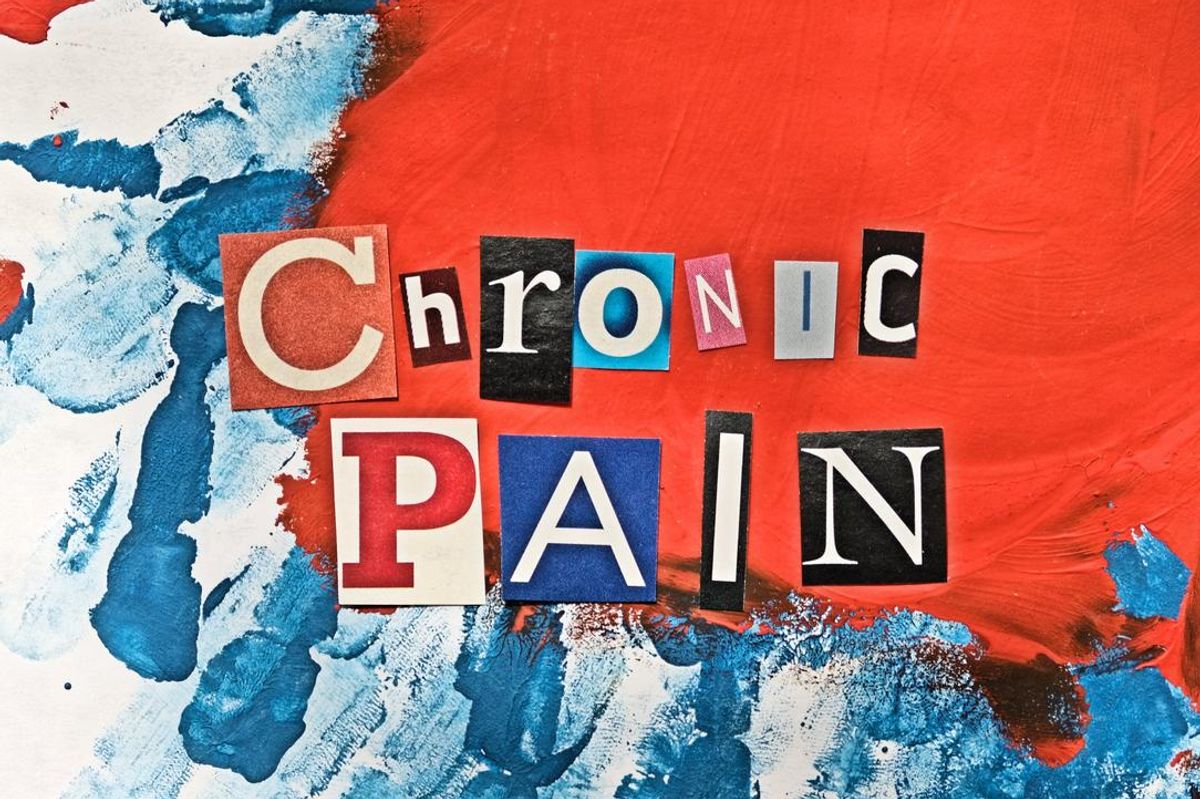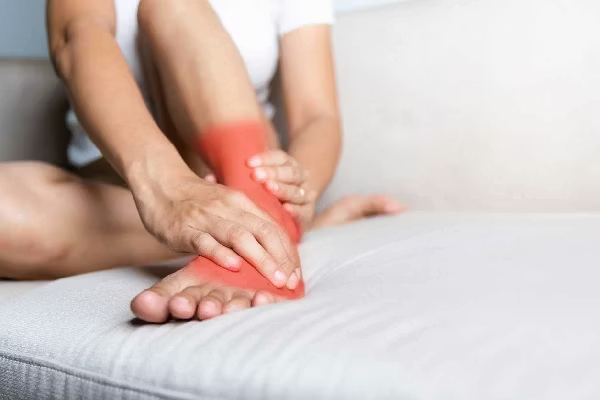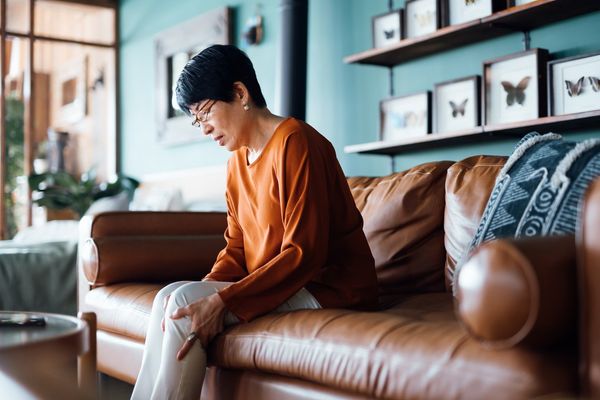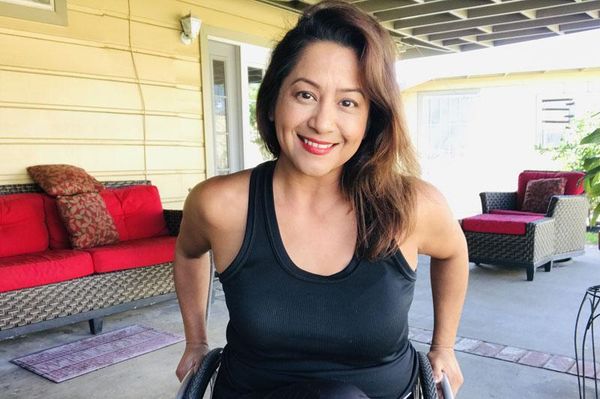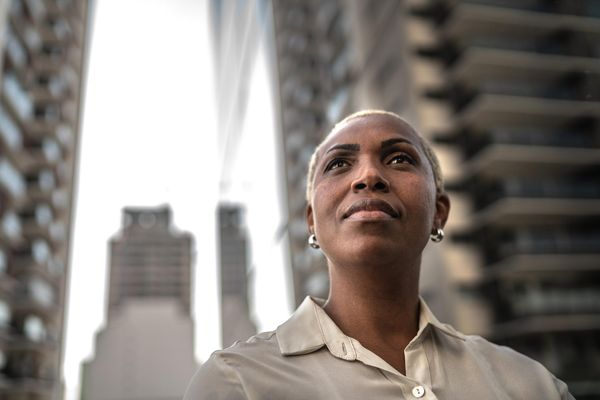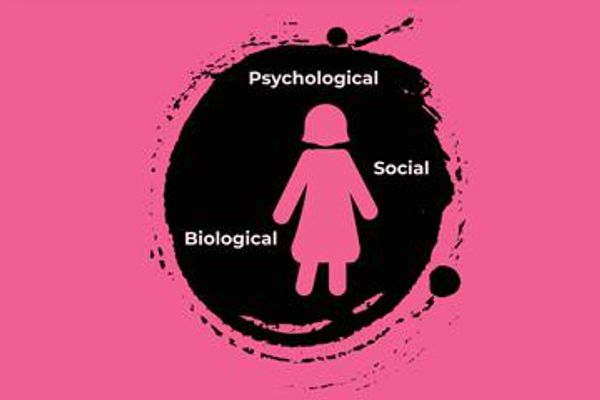By the time Cynthia Toussaint was 8 years old, she had experienced more trauma than many people do in a lifetime. Multiple members of her family lived with mental illness, and she witnessed repeated instances of domestic violence. Her father killed himself by jumping off a bridge and her mother neglected her. As a result, Toussaint was forced to assume the role of the family caretaker — cooking, cleaning and carrying the burden of trying to “fix” her dysfunctional family.
Years later, on the cusp of a bright future in ballet, Toussaint tore her hamstring while dancing. The injury led to decades of chronic pain. Now 62 years old, she’s still fighting for her health on multiple fronts.
How could one injury have such devastating consequences? What she learned recently was that childhood trauma has far-reaching implications for a person’s lifetime physical health, and researchers are only beginning to understand the relationship.
How adverse childhood experiences can lead to chronic pain
“Childhood trauma has been implicated in cardiovascular disease, cancer, metabolic disorders and the development of chronically painful conditions,” explained Mary Driscoll, Ph.D., assistant professor of psychiatry at the Yale School of Medicine and a clinical research psychologist who specializes in pain research. “This is because trauma has profound effects on the nervous, endocrine and immune systems — it can fundamentally alter the way our bodies function. Over time, this causes wear and tear on the body that can lead to pain.”
When people experience trauma, the areas in the brain that scan for threats go into overdrive, Driscoll said. Since these areas are connected by neural pathways to the areas of the brain that are responsible for pain, it can cause those areas to go into overdrive as well.
What are adverse childhood experiences?
Adverse childhood experiences (ACEs) are potentially traumatic experiences in a child’s or adolescent’s life that may have long-term effects on their health and well-being. Examples include parents’ divorce, domestic violence, parental death, sexual abuse and financial instability.
One cross-sectional analysis published in 2020 found that children with ACEs are at increased risk for chronic pain. Children with one ACE were 60% more likely to suffer from chronic pain compared to children with none. That number jumped to 170% for children with four or more ACEs. When Toussaint took the ACEs questionnaire, she learned she had a score of 8 out of a possible 10.
Although there is evidence of a connection, it’s unclear exactly what triggers the onset of chronic pain, which can start in childhood or later in life, as it did with Toussaint.
“Some people with trauma sustain a painful injury or have an accident, and the pain never goes away,” Driscoll said. “Others can link onset of pain to a surgical procedure or a specific event in life. And still others have pain come on gradually.”
Chronic pain triggered by childhood trauma is real
Toussaint went from doctor to doctor looking for answers as unbearable pain spread through her right leg. She was constantly accused of exaggerating her pain and was told it was all in her head.
“There was a lot of medical trauma; it’s like trauma on top of trauma,” she recalled. It took a toll on her, and she eventually became bedridden for several years. It was 13 years before she finally got a diagnosis of complex regional pain syndrome.
Unfortunately, her experience was the rule more than the exception.
About 7 out of 10 of chronic pain sufferers are women, but it’s unknown why women are so disproportionately affected by chronic pain and notable that most studies on chronic pain have primarily included male subjects. Many women share similar stories about being dismissed by the medical community, which complicates their care and delays diagnoses, despite a recent study showing that women are more sensitive to pain than men.
One study found that healthcare providers(HCPs) are more likely to attribute women’s pain to psychological causes than men’s. HCPs often advise women to go to therapy and dismiss their physical pain. That’s why understanding the connection between childhood trauma and chronic pain requires nuance.
“Having awareness about the overlap between trauma and pain is critical for women and the providers who see them,” Driscoll said. “It’s not uncommon for women to be sent to mental health [care] — and often this is a critical treatment modality. However, pain is a function of biological, psychological and social factors and so all of those things must be addressed. Pain and trauma are related, but treatment must focus on both — not either or.”
Just because childhood trauma contributes to pain and other poor health outcomes doesn’t mean that what’s happening physically isn’t real.
For example, Driscoll said, “Most people agree that stress is a trigger for migraine — and for many, hormones are too. And yet we don’t say that the pain caused by a stress migraine [attack] is any less real than a migraine [attack] caused by hormonal changes. We know that stress-induced migraine [attacks] require stress management strategies in addition to other things, like taking medications …”
Working through childhood trauma with a mental health profession can help patients stop operating in flight-or-fight mode and reel in an overactive stress response, thus improving their overall well-being. Combined with other healthcare modalities, working through trauma can open up a path to recovery.
In 2019, Toussaint’s pain doctor, who was also a psychiatrist, knew her history and suggested she unpack her childhood trauma. That’s when she took the ACEs questionnaire and saw the eye-opening results.
“It was just one piece of the puzzle, but it was one that I hadn’t dealt with, and in order to heal, I needed to explore it,” she said.
She started seeing a therapist for Eye Movement Desensitization and Reprocessing (EMDR) to work through her trauma, along with practicing biofeedback therapy and meditation. She also gets acupuncture on a regular basis, and continues to see her pain doctor.
She credits this holistic approach with helping her find a sense of normalcy and overcome her pain.
“Facing my trauma helped to release my pain,” she said. “It’s scary, but you’re never going to truly heal until you work through your trauma.”
- Suffering From Chronic Pain as a Black Woman ›
- HealthyWomen’s Chronic Pain Advisory Council ›
- Complex Regional Pain Syndrome Treatment Options - HealthyWomen ›
- Chronic Pain Drove Me to Despair, Cancer Taught Me to Heal - HealthyWomen ›
- EMDR Therapy Helped Me Heal from Trauma - HealthyWomen ›
- How I Healed From the Trauma of Chronic Pain - HealthyWomen ›
- How Chronic Pain Changes the Brain - HealthyWomen ›
- What Is CRPS? - HealthyWomen ›

